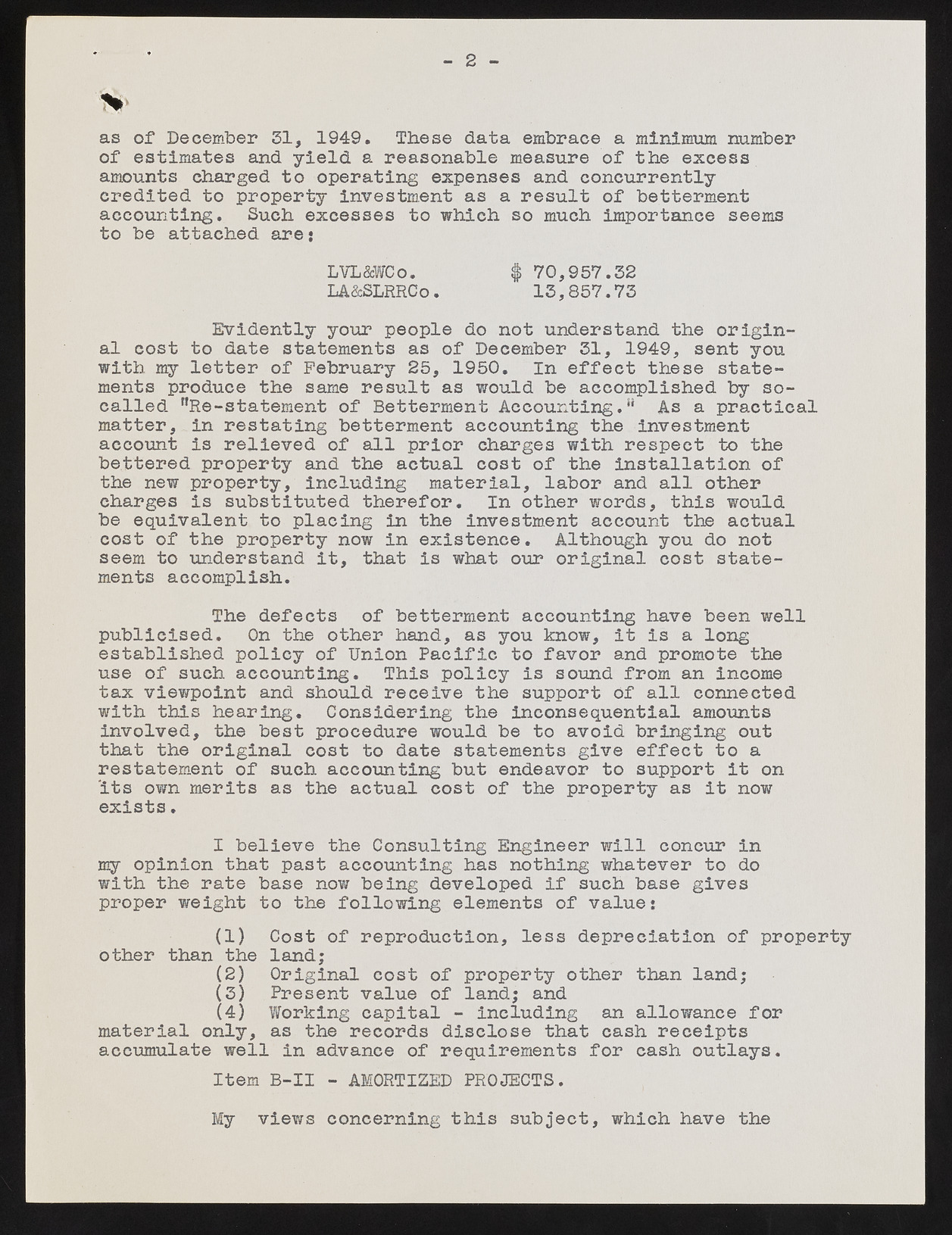Copyright & Fair-use Agreement
UNLV Special Collections provides copies of materials to facilitate private study, scholarship, or research. Material not in the public domain may be used according to fair use of copyrighted materials as defined by copyright law. Please cite us.
Please note that UNLV may not own the copyright to these materials and cannot provide permission to publish or distribute materials when UNLV is not the copyright holder. The user is solely responsible for determining the copyright status of materials and obtaining permission to use material from the copyright holder and for determining whether any permissions relating to any other rights are necessary for the intended use, and for obtaining all required permissions beyond that allowed by fair use.
Read more about our reproduction and use policy.
I agree.Information
Digital ID
Permalink
Details
More Info
Rights
Digital Provenance
Publisher
Transcription
2 as of December 31, 1949. These data embrace a minimum number of estimates and yield a reasonable measure of the excess amounts charged to operating expenses and concurrently credited to property investment as a result of betterment accounting. Such excesses to which so much importance seems to be attached are; LVL&WCo. $ 70,957.32 LA&SLRRCo. 13,857.73 Evidently your people do not understand the original cost to date statements as of December 31, 1949, sent you with my letter of February 25, 1950. In effect these statements produce the same result as would be accomplished by so- called wRe-statement of Betterment Accounting.1* As a practical matter, in restating betterment accounting the investment account is relieved of all prior charges with respect to the bettered property and the actual cost of the installation of the new property, including material, labor and all other charges is substituted therefor. In other words, this would be equivalent to placing in the investment account the actual cost of the property now In existence. Although you do not seem to understand it, that is what our original cost statements accomplish. The defects of betterment accounting have been well publicised. On the other hand, as you know, it is a long established policy of Union Pacific to favor and promote the use of such accounting. This policy is sound from an income tax viewpoint and should receive the support of all connected with this hearing. Considering the inconsequential amounts involved, the best procedure would be to avoid bringing out that the original cost to date statements give effect to a restatement of such accounting but endeavor to support it on Its own merits as the actual cost of the property as it now exists. I believe the Consulting Engineer will concur in my opinion that past accounting has nothing whatever to do with the rate base now being developed if such base gives proper weight to the following elements of value: (1) Cost of reproduction, less depreciation of property other than the land; (2) Original cost of property other than land; (3) Present value of land; and (4) Working capital - Including an allowance for material only, as the records disclose that cash receipts accumulate well in advance of requirements for cash outlays. Item B-II - AMORTIZED PROJECTS. My views concerning this subject, which have the

